11 tips for choosing a hammock for your home and summer
A hammock is a symbol of rest and relaxation. It allows you to soar in the air and sway slowly, which calms and relaxes. In a hammock, you can sleep, read a book, admire the world around you, drink tea or just dream about your own thing - the main thing is that the hammock itself is comfortable, and after lying in it nothing hurts. To ensure that the result meets expectations, it is important, at least in general terms, to imagine which hammock is better to choose for a summer residence, and which is more appropriate at home. We deal with the main types, designs, materials and sizes.
No. 1. Hammocks: from Indians to the present
The invention of hammocks is attributed to the Indians of South America. They invented hanging boxes to escape from snakes, but it soon turned out that their invention was also incredibly comfortable for sleeping. The sailors who discovered America appreciated all the advantages of a hammock and almost immediately began to use it on ships, as it was less sickly. With sailors, the invention reached Europe and spread throughout the world.
Today, hammocks are used in all corners of the planet, and in some countries their own traditions of its manufacture have developed. For example, in Brazil, it is customary to create hammocks from cotton and Brazil nut wood, to decorate the product with fringe. In Colombia, lianas and agave bark are used for the production of hammocks, products are painted with natural dyes, and legends say that Colombian hammocks are the most durable and strong, since in Colombia they know and use secret technology. In Soviet cottages, mesh hammocks were usually used, which were not very comfortable, but extremely budget-friendly.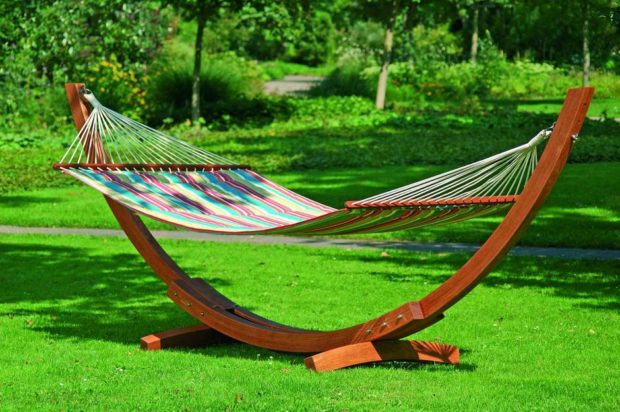
Modern designers with special love for hammocks and are constantly pleased with advanced designs, unthinkable ideas and colors. Hammocks are becoming more comfortable and functional, turning into a stylish addition suburban area and city apartment.
No. 2. Types of hammocks
By design, all hammocks are divided into two types:
- outboard;
- wireframe.
In addition, today on sale are presented swing hammocks, hammock chairs and baby hammocks - These are products that should be considered separately. To determine which hammock for a summer residence or home is best suited, you must carefully weigh the advantages and disadvantages of each option.
No. 3. Hammock
A hanging hammock is a real classic. This bed is mounted on two supports. In the country, trees usually serve as such supports, but if there are no suitable ones, then you can use pre-installed and reliably concreted pillars. In apartments, this type of hammock is attached to the ceiling or walls.
Hammocks may have slats at the ends of a bed or without them. Models without straps are cheap, easy to fold, take up minimal space and transport without problems, and many compare these hammocks to the cradle, as they literally envelop the sleeping person. On the other hand, these models are usually designed only for one person and not everyone will be comfortable. The presence of slats allows you to make the hammock panel more stretched. To understand which hammock will be more comfortable and suitable, it is better to arrange a practical test.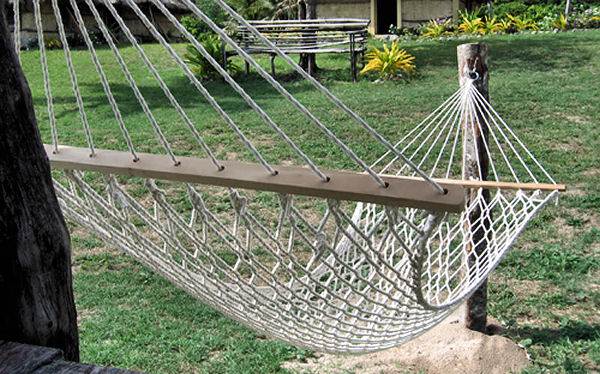
The common advantages of hanging hammocks include:
- low price;
- compactness and simplicity of transportation;
- big variety;
- ease of installation.
TO cons carry a high risk of falling out of the hammock and the gradual forcing of the cloth under the weight of a person. For convenience, different models can vary greatly. Some hammocks of this type may equipped with a mosquito netso you can spend the night outdoors. In addition, you can additionally buy special mounts that allow you to increase the range between the supports and protect the trees from damage.
Number 4. Frame hammock
Frame hammocks are universal designs that are appropriate to use both in the country and indoors. No need to look for supports, as the hammock rests on the finished frame. The latter can be made of metal or wood. Frame hammocks can be placed anywhere, but Depending on the design features, they are:
Stationary models more stable and solid, weigh a lot, so the place for them must be carefully selected. Hammock for a summer residence with a frame can equipped with a canopy, side table, mosquito net and other additions. Stationary frame hammocks in apartments are also of constant success. They are used as a resting place (sometimes as an extra bed) and put in the bedrooms, cabinets, on theloggias and in the living rooms. On sale there are options for conceivable and unthinkable design, in different sizes and colors.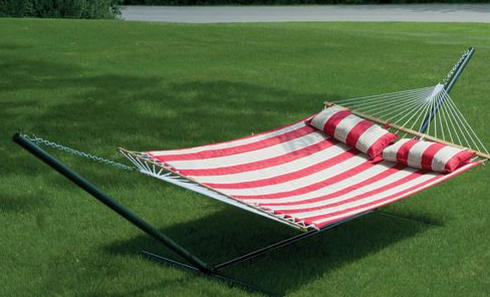
Collapsible hammocks Win in mobility, but lose in reliability. They usually have a metal frame. Such a hammock can be moved from place to place and transported with you from home to the cottage.
General advantages of frame hammocks:
- the ability to install anywhere, independence from the location of trees, the lack of the need to additionally mount support posts
- higher safety and practicality in comparison with hanging hammocks;
- the frame allows you to more evenly stretch the canvas, so the feeling of being in the bag disappears;
- reliability in operation;
- a huge variety in terms of design, construction and size.

The average price for hammocks with a frame is higher than for hanging models, and this is their only disadvantage.
The distance between the supports should be at least 3 m, and the preferred material is aluminum and stainless alloys, if you plan to operate on the street, as they are as resistant to negative environmental influences as possible. For the house, you can choose a hammock with both a wooden frame and a metal one - it all depends on the interior and style.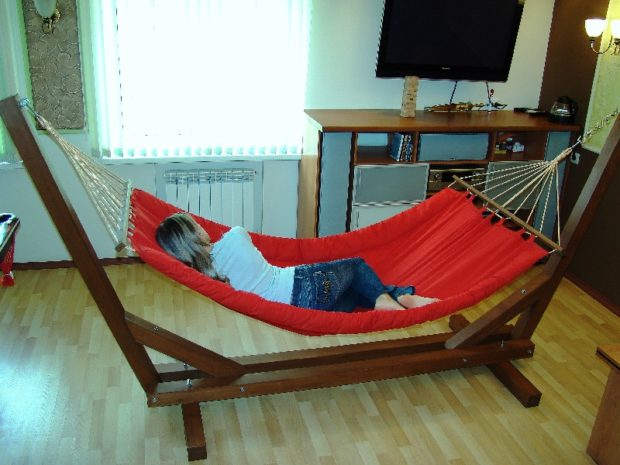
No. 5. Hammock swing
A hammock swing is more likely an option for summer cottages. In residential spaces, such designs are rarely used. A key design feature is only one fulcrum, all cables and ropes converge at one point and are attached to a tree or beam. The size of the bed can be anything. Small hammocks-cradles are suitable for children, and if they have a canopy, they will generally become a cozy shelter for kids. There are hammocks that are very large in diameter, they are intended for company relaxation, can be supplemented with pillows, a canopy, a canopy. The main thing in this case is to find a solid support.
A hammock of a similar design can be installed in a recreation area or in kids corner. The convenience and comfort of hammocks and swings are undeniable, but they are not cheap.
No. 6. Hammock chair
The hammock chair usually has a frame structure, but can be suspended and attached to tree trunks in the country or to the ceiling in the apartment. From the usual hammocks, such models differ only in the shape of the bed. In this hammock it will be convenient to read a book, work with a computer, knit, drink tea and chat with friends.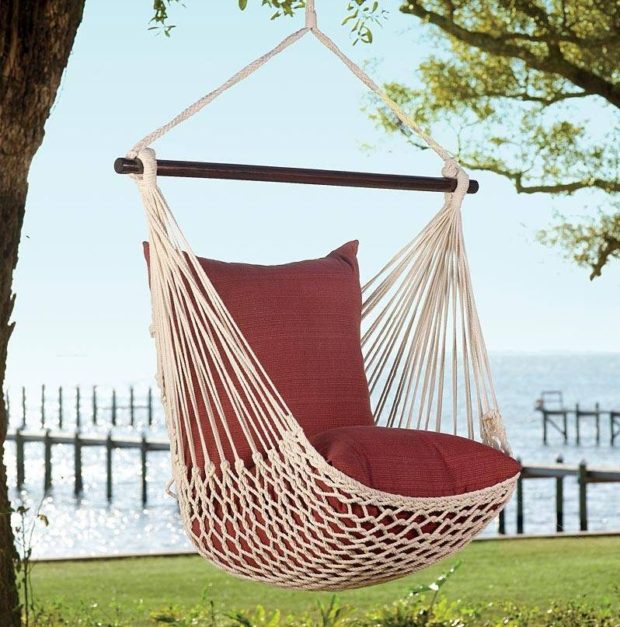
Country options for such structures are often complemented by a canopy.A hammock chair is the most common version of a hammock for the home: it takes up little space, it still looks unusual and fresh, in operation it shows itself reliably and gives comfort. Often such hammocks become an ornament of loggias (even small ones), children's rooms, living rooms and bedrooms. For a house, it is better to take a frame hammock so as not to add an extra load to the floors.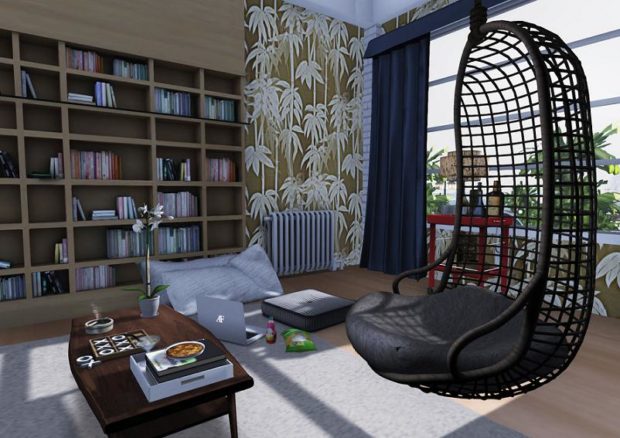
Number 7. Hammock for children
Hammocks for children are not much different from adult models, but still manufacturers distinguish them in a separate category. Such products have reduced sizes, bright design, the most safe and convenient design, are made of natural materials. Often, side panels are added for added protection. The bottom of children's hammocks is ergonomically shaped so that the child is comfortable in it, and there are no negative consequences from rest in the form of health problems. Such hammocks withstand about 40 kg and, as a rule, receive protection against overturning. They are used both in the country and at home.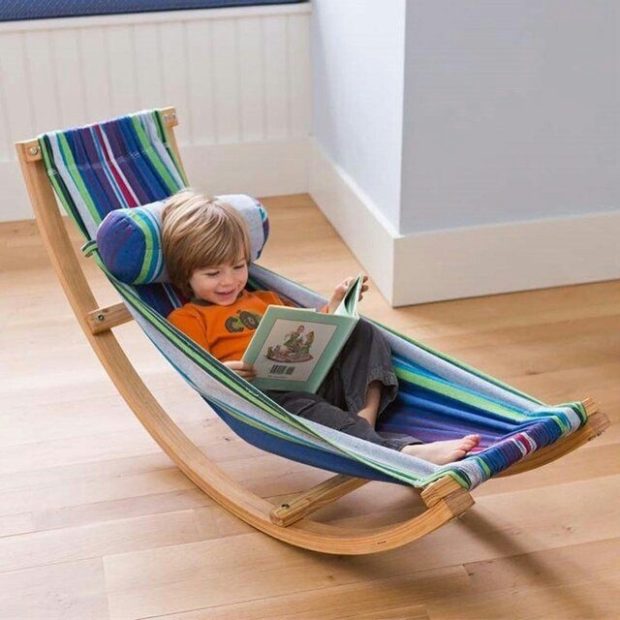
Number 8. Hammock material
For the convenience of relaxing on a hammock, the material of manufacture is responsible, for the most part: even the most thoughtful and reliable design will not save if the bed sags, squeezes through, digs in and does not allow comfortable sitting.
According to the material of manufacture, hammocks are divided into:
- mesh;
- tissue;
- wicker.
Mesh hammocks, once very popular, today are used less and less. The main advantage is the low price, but even it does not save such designs. The mesh bed withstands small loads, is short-lived and not very convenient, since after 10 minutes of lying the mesh begins to strongly penetrate the skin. If the budget is limited, but you still want to use a hammock in the country, then the mattress will allow you to slightly increase the convenience of a mesh hammock.
Wicker hammocks more durable, durable and comfortable, but under one condition - weaving should be very dense. Among wicker hammocks, the most popular are:
- rattan hammocks beautiful, durable, withstand up to 130 kg, resistant to sun and moisture, flexible and elastic. The price is high, and with a sharp change in weather, rattan can dry out. Hammocks from artificial rattan deprived of this disadvantage and are cheaper;
- Brazil nut hammocks - This is an expensive exotic, which is distinguished by record strength, resistance to temperature extremes and negative weather events. The wood is undergoing serious processing, so the hammocks from it are very expensive;
- vine used for hammocks that are located under a canopy or in an apartment. These are strong, beautiful and durable products.

The most popular fabric hammocks, they are optimally balanced in price and quality, differ in the mass of a variety of colors. But just which hammock is better to choose from natural or synthetic fabrics? Most often used in production:
- cotton. These are comfortable hammocks that easily take the form of a vacationer and have a pleasant to the touch surface. The material passes air well, does not cause allergies and shows good strength (can withstand up to 160 kg). The cons include fear of moisture and a high risk of moldif you do not dry the material on time. Cotton creases, can shrink after washing and fade in the sun, so the best place for a cotton hammock is in the shade of trees, on a covered terrace or indoors;

- sackcloth - durable, cheap material, allows air to pass through, is not afraid of the sun, but has a sticky surface and can rot. It is best to lay on top a piece of soft tissue;
- linen - durable, wear-resistant natural material that breathes, does not cause allergies, well takes the form of a lying one. Of the minuses, large shrinkage after washing and difficulty in ironing;
- parachute silk It has a soft surface, it breathes, it is light and durable, wear-resistant, not afraid of moisture, but afraid of sunlight. For hammocks, this is one of the best options;

- mattress teak - A dense, durable and soft fabric that absorbs moisture well, dries quickly and does not cause allergies. The material is unpretentious in care, but it is often not recommended to leave it in the rain for a long time;
- canvas, canvas and camouflage fabric often used to make tourist hammocks, peculiar tents, floating in the air. The materials are durable and can withstand any environmental phenomena, but are rude to the touch;
- awning fabric It is strong and resistant to wear, is not afraid of moisture and the sun, but does not let air in and is less pleasant to the body than natural analogues;
- nylon and polyester have almost the same properties. These are durable, moisture and UV resistant synthetic fabrics, but they do not breathe and have a slightly tougher surface than cotton or linen.
No. 9. Load, capacity and dimensions
Everyone who goes to choose a hammock for giving or at home should have a good idea where the product will stand, for what purposes it will be used, and who will rest on it. Not only the type of construction and material depend on this, but also its parameters:
- maximum load different materials are different. A parachute silk hammock can easily withstand 150-200 kg, from a Brazil nut - up to 180 kg, from cotton - up to 160 kg, from rattan - up to 130 kg, and from synthetic fabrics - up to 120 kg. The grid maintains 80-100 kg. These are all values of the maximum load, but most models are designed for operation with a load of 100-120 kg;
- spacious hammock directly depends on the quality of the supports, fixtures and material. Hammocks are usually divided into children's rooms (withstand up to 80 kg), adults (120 kg) and family (200 kg);
- sizes may vary greatly. The standard for a single hammock is considered to be 2 m long and 1.5 m wide, but much more spacious models can be found.
It is better to take a hammock with a margin of safety.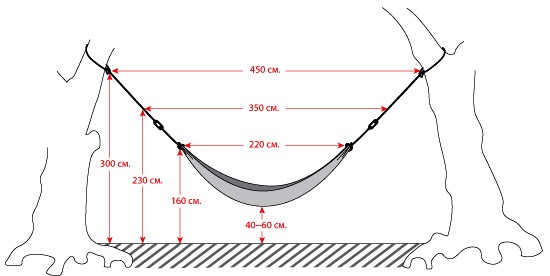
No. 10. What else to consider when choosing a hammock?
To buy a really comfortable hammock, which will become a place of rest and relaxation, when choosing, pay attention to such details:
- in quality products, the rope is a continuation of the canvas, and not just sewn to it;
- if there are slats in the structure, then they should be of the same width as the bed;
- the hammock should not turn into a cocoon, from which it is difficult to get out and into which it is difficult to get;
- carbines, dowels, anchors and others fasteners must be strong and strong;
- Prefer natural materials, if possible.
Well proven such hammock manufacturers:
- La Siesta, Amazonas, Arlio, Snugpak, Cacoon - companies that produce high-quality certified products, but their prices are higher than those of many competitors;
- Grilly, Nordway, Outventure, Totem, Garden4You, Camping produce products in the middle and lower price segment. Hammocks are less durable, but they withstand several seasons.
You can also pay attention to manufacturers such as Haba, Easy Camp and La Rete.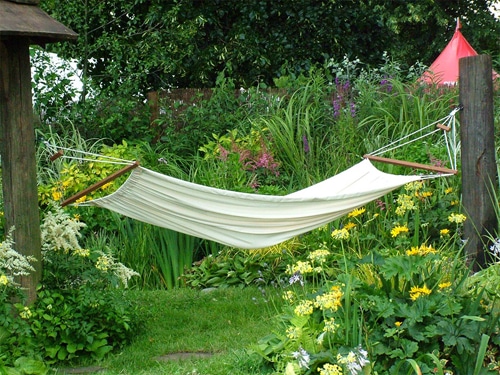
No. 11. Choosing a place for a hammock
If you plan to install hammock in the country, then the place for him is chosen taking into account such recommendations:
- preference is best given not too sunny and windy area. If the hammock has a canopy, then you can choose a sunny place, for example, near the pool. Preferably surface under a hammock did not turn into dust during the drought period or into dirt during the rainy season. The best way - lawn or playground covered paving stones;
- as hammock supports choose trees with a diameter of at least 15 cm, it is better to use special mounts so as not to damage their bark. As an alternative, metal poles of the same diameter are suitable, they are buried in the ground to a depth of 40-60 cm and concrete, they can be decorated with a hemp rope externally. From the support to the beginning of the canvas should be 15-20 cm, to ensure safety and the ability to adjust the tension of the slings;
- optimal mounting height hammock - 150-170 cm;
- a children's hammock is placed so that it can be seen from almost all corners of the site;
- frame hammocks are assembled on site according to the instructions.

If you choose hammock for home, it’s better, we repeat, to take a wireframe model. It is easier to install in an apartment, more mobile and safe, but if you wish, you can hang a hammock on the ceiling or walls. Recently, design projects often appear with the location of a hammock chair on the balcony, but it will fit well in any other room, from the living room to the nursery.
As for health effects, then the doctors do not give a definite answer. On the one hand, sleeping in a hammock for a long time is not recommended, as this can harm the neck and spine. On the other hand, if the canvas is strong and dense, it has slats, then such a rest is even useful and helps to cope with insomnia.

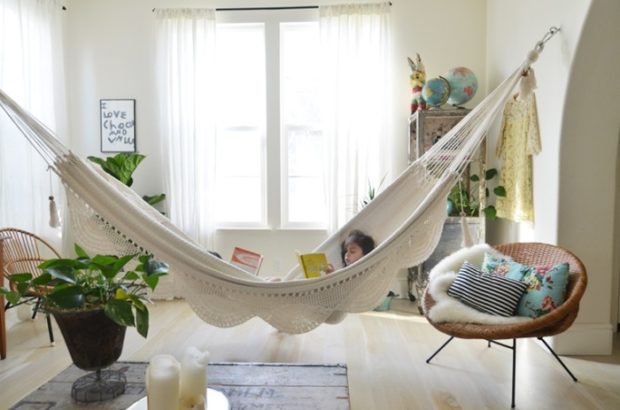
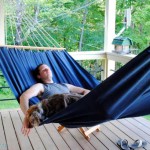
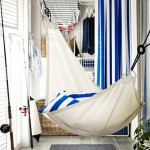
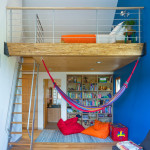
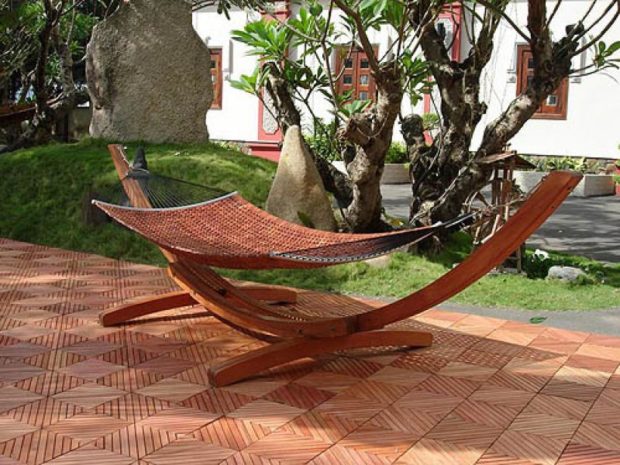


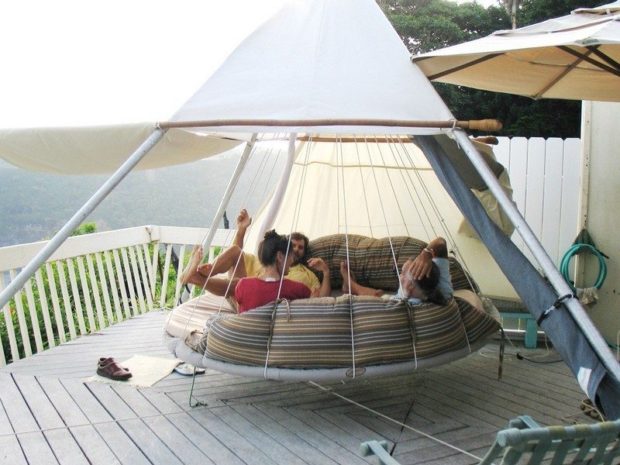

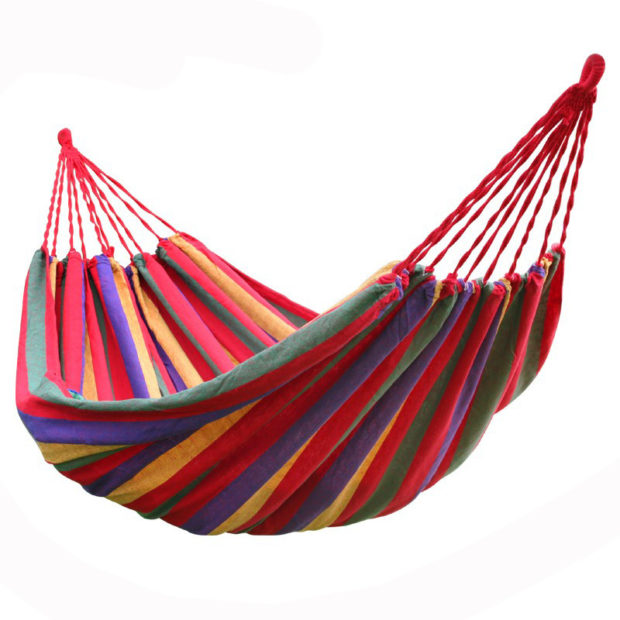
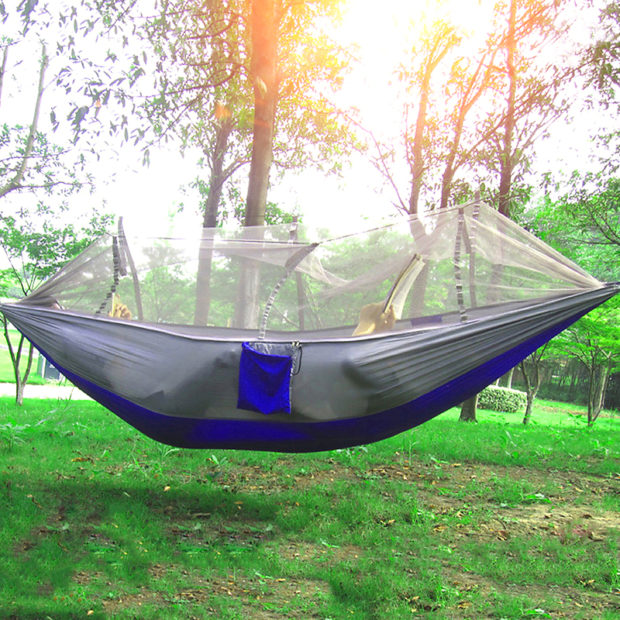
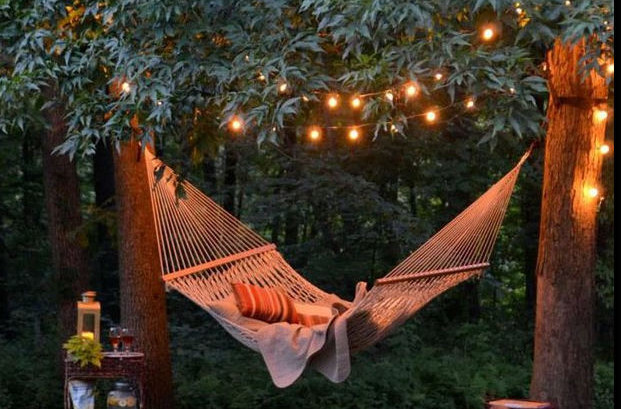

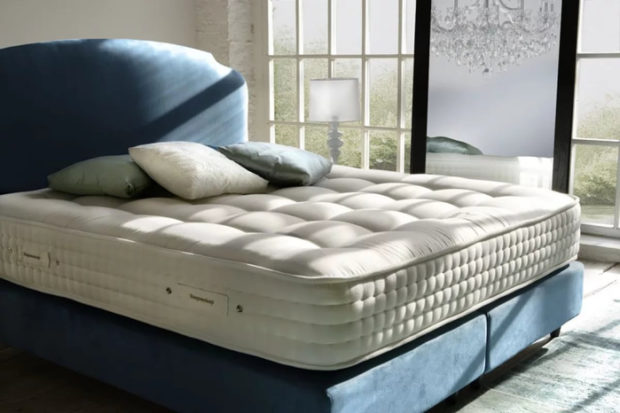
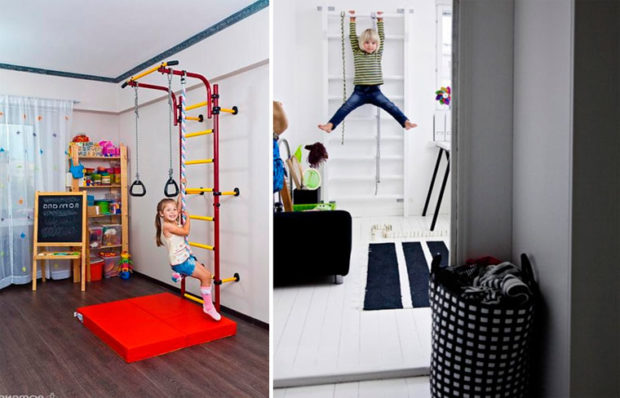
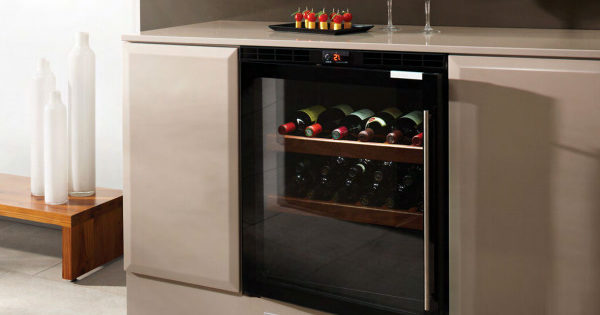
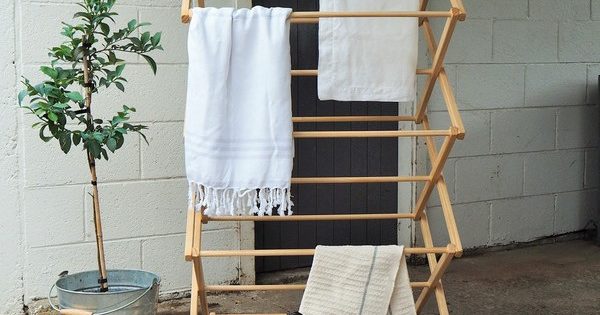
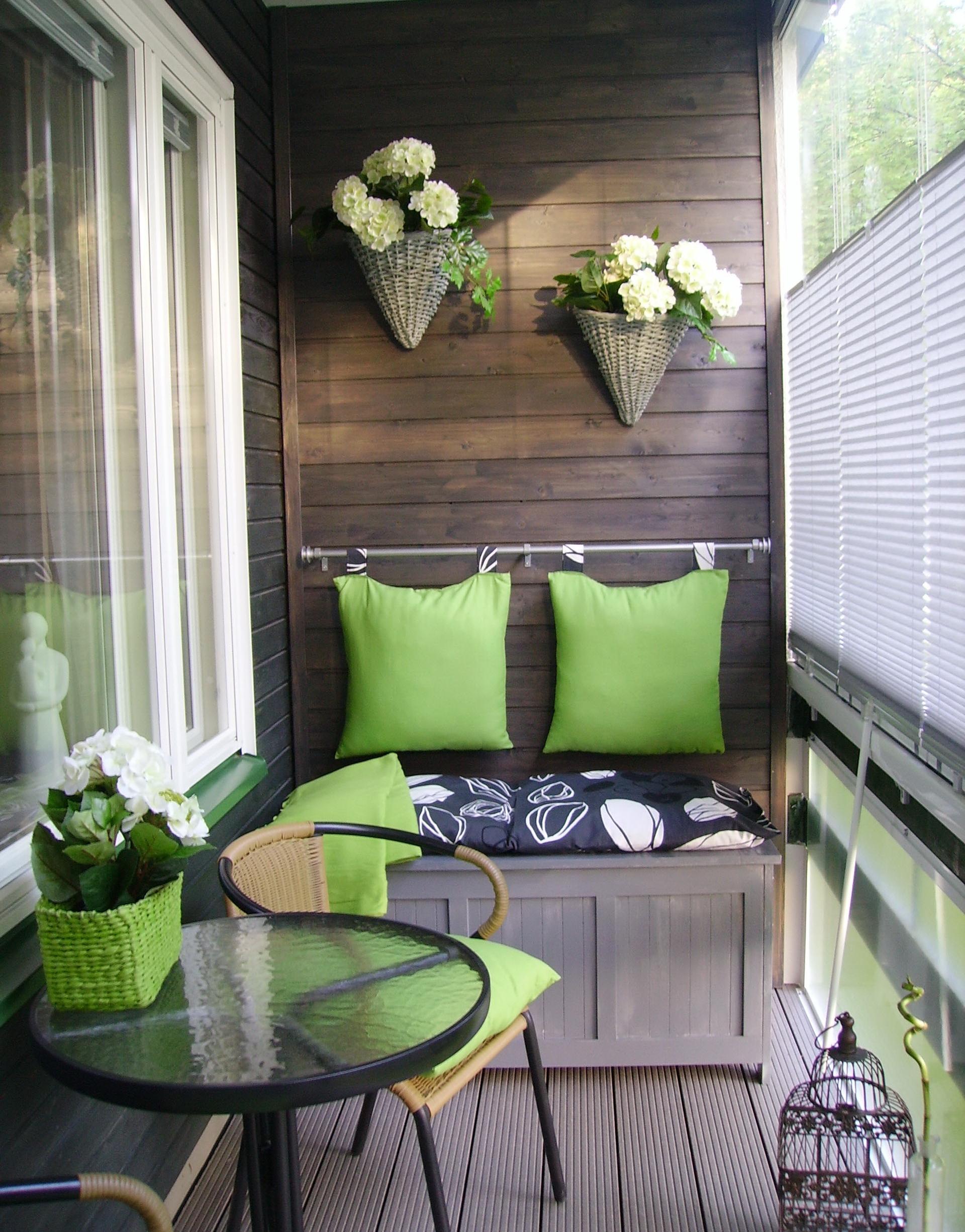
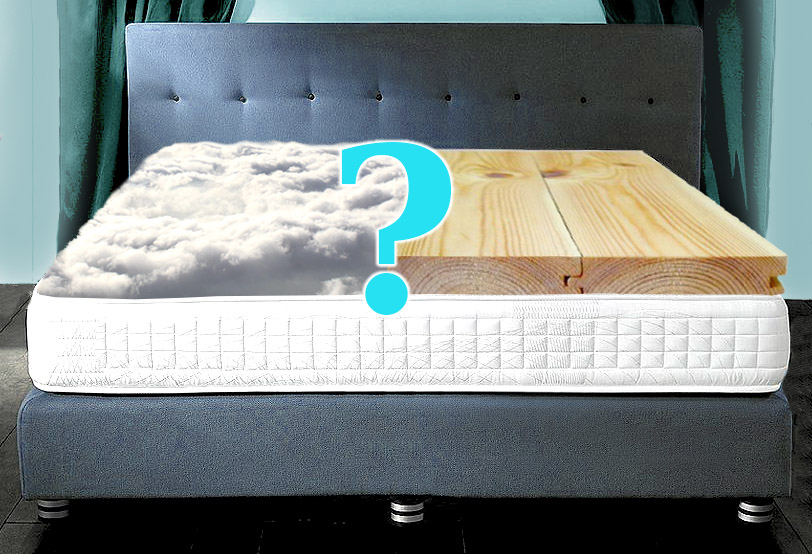
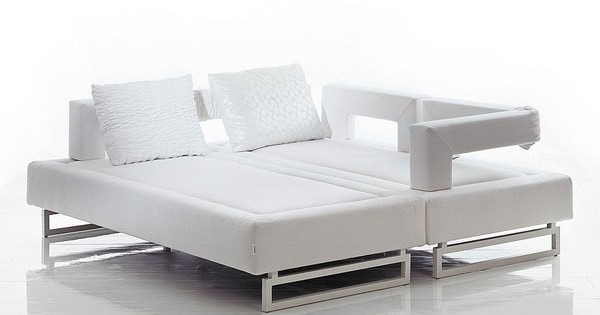
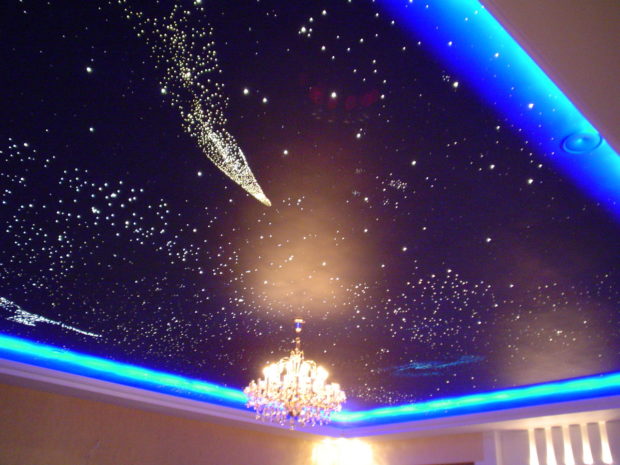
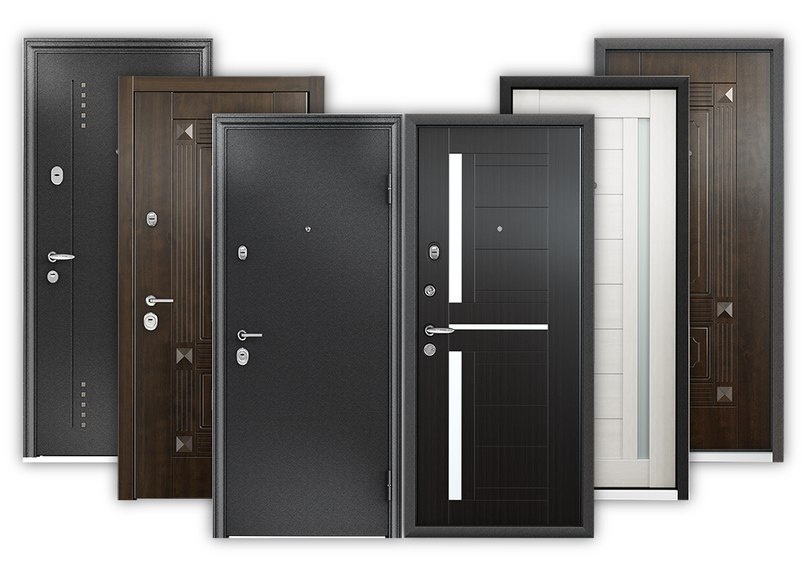
Where to buy a good mesh hammock? There are good brands in Ukraine. Need a hammock that can be left on the patio, veranda for the winter
Anna, last summer they took a cotton hammock at the outlet, served us faithfully until we left it on the street and it burst open. Just a week ago they bought from polyester, the advantage of these hammocks is that they can be left outdoors all year round.
And I advise you to look at Amazon or Ali. There is a decent choice